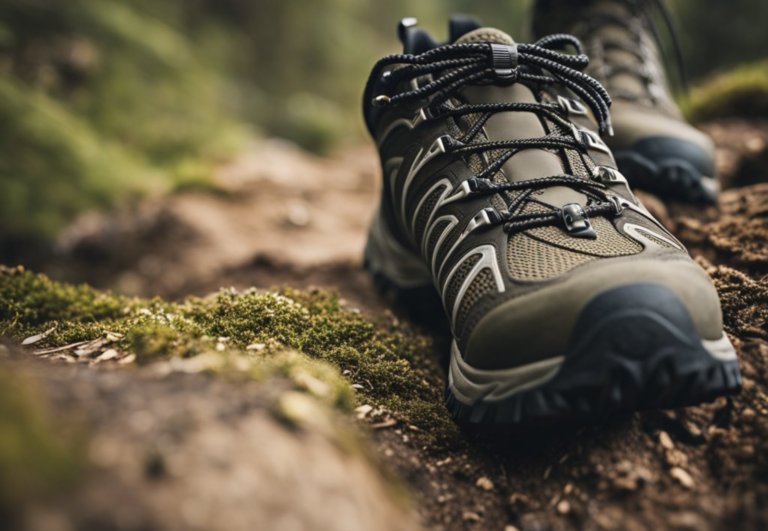Training for Other Sports: Enhancing Athletic Performance with Trail Running
Training for various sports requires a specific focus on skills and conditioning relevant to that discipline. However, incorporating trail running into a cross-training regimen can be an effective way to enhance overall athletic performance. As a UESCA certified running coach with firsthand experience, I’ve observed how trail running can benefit athletes from different sports backgrounds. The mixed terrain and elevation changes can improve agility, core strength, and cardiovascular endurance.

Tailoring trail running sessions to complement other sports is key. I advise athletes to focus on the similarities between the trails and their primary sport. For example, a soccer player might use trail running to improve their ability to maneuver quickly over uneven ground, mimicking the quick changes in direction on the field. Meanwhile, a cyclist could use it to build leg strength and bolster endurance without the repetitive motion of pedaling.
Trail Running Fundamentals – How Do They Affect Athletic Performance?

Trail running provides a dynamic way to enhance your athletic abilities, contributing to improved balance, strength, and cardiorespiratory fitness.
My aim is to impart key strategies that will equip you with the necessary knowledge and techniques to confidently tackle the trails.
Trail running differs from running on roads due to the varied and often unpredictable terrain. This terrain typically involves a mix of rough paths, steep climbs, and potential obstacles, all of which create a unique challenge for runners.
Embracing these challenges is critical, as the varying elevation gain requires both physical and mental adaption. This adaptability translates to improved performance across a number of sports by refining your agility and endurance.
Equipments and Gear
The right equipment is essential for trail running. Here’s what I recommend:
- Footwear: Durable running shoes with ample traction, designed to provide stability on uneven surfaces.
- Clothing: Breathable, moisture-wicking fabrics that are suited to the trail’s microclimate.
- Essential Gear: A hydration pack, GPS or a map, and a small first-aid kit.
Consider the following table to choose your essentials:
| Item | Characteristics | Importance |
|---|---|---|
| Footwear | Grippy, protective, and supportive | Critical |
| Clothing | Lightweight, breathable, moisture-wicking | Highly Important |
| Gear | User-friendly, reliable, and necessary for safety | Essential |
Trail Running Techniques
To run effectively on trails, focus on these techniques:
- Form: Keep your center of gravity over your feet for better balance.
- Stride: Shorten your stride when navigating steep or technical sections to maintain control.
- Cadence: Aim for a higher cadence to help negotiate the varied terrain more efficiently.
Remembering to periodically scan the trail ahead will allow you to anticipate and adjust to upcoming changes in elevation or obstacles. My experience tells me that incorporating these trail-running fundamentals into your training can enhance your overall athleticism, offering cross-sport benefits through a well-rounded improvement of your physical capacities.
Training and Preparation
Incorporating trail running into an athlete’s regimen not only builds stamina but enriches their overall training plan by engaging diverse muscle groups.
Building a Solid Base
Establishing a strong aerobic base is critical for any athletic discipline. My approach includes the use of trail running, which enhances cardiovascular endurance and core strength. I often recommend starting with steady, low-intensity runs to build endurance before incorporating more challenging terrain, which requires greater muscle strength. Here’s a simple plan I suggest for the initial weeks:
- Week 1-2: 2-3 easy trail runs, 20-30 minutes each, flat terrain
- Week 3-4: Increase duration to 30-45 minutes; introduce gentle hills
Focus on maintaining a consistent pace that allows for conversation, which ensures the intensity remains aerobic. It’s crucial to develop this foundation before moving on to more strenuous workouts.
Cross-Training Benefits
Cross-training through trail running provides a refreshing variety to a standard training routine, enhancing flexibility and general strength. I integrate high-intensity workouts, such as intervals on trails, to improve muscle strength throughout various muscle groups. Here’s a sample cross-training workout week that includes trail running:
- Monday: Rest or light stretching
- Tuesday: Interval running on trails, 1-minute hard effort followed by 2 minutes of walking or easy jog for recovery, repeat for 30 minutes
- Wednesday: General strength training (focus on legs, core, and arm strength)
- Thursday: Easy recovery run on flat trails, 30 minutes
- Friday: Alternative cardio activity (cycling, swimming), 45 minutes
- Saturday: Long, slow trail run, increasing time weekly
- Sunday: Rest
Incorporate flexibility exercises and dynamic stretches to improve range of motion, and engage in strength training sessions twice a week to ensure a balanced approach.
Maximizing Performance

As a certified running coach, my focus is on helping athletes use trail running to enhance their athletic abilities in other sports. It’s about building agility, power, and endurance in ways that translate across disciplines.
Advanced Techniques and Workouts
My suggested workouts aim to improve speed and power, crucial components for peak performance in many sports. Intervals on trails with varied terrain will develop agility and speed, while hill repeats heighten power and endurance. Here’s an example workout plan for the week:
- Monday: Rest or light yoga for recovery
- Wednesday: Hill repeats (10 x 1 minute at a steep incline)
- Friday: Speed intervals on flat terrain (8 x 400 meters)
- Sunday: Long, steady run (60-90 minutes at conversational pace)
Plyometric exercises like lunges and squats, when integrated into a routine, can enhance speed by improving your stride length and leg strength. Always ensure a proper warm-up before these workouts to prepare the muscles.
Injury Prevention & Recovery
To prevent injury and aid recovery, incorporate exercises such as planks and lunges into your routine to build core strength and stability. Consistent stretching and activities like yoga can improve flexibility and reduce the risk of injury. A balanced training plan should also allow ample recovery days to ensure muscles have time to heal. Here’s a simplified weekly schedule to maintain muscle health:
| Day | Activity | Duration |
|---|---|---|
| Monday | Yoga/Stretching | 30 minutes |
| Tuesday | Rest | – |
| Thursday | Light Jog | 20 minutes |
| Saturday | Rest or Active Recovery | – |
Remember, a personalized approach with a running coach will further tailor your program to your specific needs, enhancing motivation and results.
Cross-Training Advantages for Athletes

As an experienced UESCA certified running coach, I know that integrating trail running into an athlete’s routine can provide profound cross-training benefits that enhance sport-specific skills, while introducing mental and physical variety.
Enhancing Sport-Specific Skills
Trail running is an effective cross-training method that can significantly improve one’s sport-specific skill set. Whether you’re a beginner or seasoned athlete, trail running can enhance your cardiovascular fitness and muscular endurance, essential components across various sports such as cycling, swimming, and cross-country skiing. For cyclists and mountain bikers, the varied terrain of trail running strengthens various muscle groups, including stabilizing muscles that contribute to better balance and joint health. Swimmers can benefit from the increased lung capacity and mental focus that trail running offers.
Key Enhancements in Sport-Specific Skills through Trail Running:
- Cardiovascular Improvement: Vital for endurance-based sports.
- Muscular Endurance: Longer trail runs increase the endurance of the muscles.
- Joint Strength: Navigating uneven terrain strengthens joints, aiding in injury prevention.
- Balance: Essential for sports like mountain biking, where stability is key.
Mental and Physical Benefits of Variety
I emphasize the importance of variety in an athlete’s training regime for both mental and physical well-being. Trail running can break the monotony of routine exercises and thereby strengthen mental fortitude, while also introducing athletes to a community that shares a passion for fitness and the outdoors. The physical benefits are just as significant; the change in activity can help avoid overuse injuries by spreading the load across different muscles and joints. Moreover, the mental shift can rejuvenate an athlete’s mindset towards training, keeping their routine fresh and motivating.
Physical and Mental Variety Advantages:
- Injury Prevention: Engaging in a variety of movements reduces overuse of specific muscles.
- Muscle Strength: Working different muscle groups builds overall strength.
- Community Engagement: Trail running events can link athletes to new communities.
- Refreshed Mindset: New challenges and environments can reinvigorate an athlete’s love for sport.
Integrating Trail Running into Other Sports

Integrating trail running into a training program for other sports can enhance overall athletic performance. It improves balance, strength, and endurance, while preventing muscle imbalances from repetitive sports-specific movements.
Balancing Training Schedules
When weaving trail running into a diverse training schedule, it’s crucial to maintain a balance that prevents overtraining. I recommend a training split that allows for adequate recovery. For instance, if you’re involved in a sport that relies heavily on leg work, like soccer, your training schedule might look something like this:
- Monday: Sport-specific drills
- Tuesday: Trail running + Core strengthening
- Wednesday: Rest or light recovery workout
- Thursday: Sport-specific drills
- Friday: Strength training – focus on glutes, hamstrings, and quads
- Saturday: Trail running with varying inclines
- Sunday: Rest or active recovery
By spreading out the trail runs and mixing them with rest days and strength workouts, you’ll optimize recovery while still gaining the benefits of varied, cross-training activities.
Sport-Specific Adaptations
Not all sports benefit from trail running in the same way. To maximize its effectiveness, tailor trail running sessions to complement the demands of your primary sport:
- Endurance Sports: Longer, steady-state trail runs can increase aerobic capacity and mimic the endurance needed in sports like long-distance cycling or rowing.
- Team Sports: Shorter, high-intensity trail runs with variable terrain can boost agility and mimic the quick directional changes found in sports such as soccer or basketball.
Incorporating strength exercises like lunges and stability exercises directly into trail runs can also help strengthen the core and lower body. These workouts will activate the glutes, hamstrings, and quads, reducing the risk of muscle imbalances and enhancing performance on the field or court.






